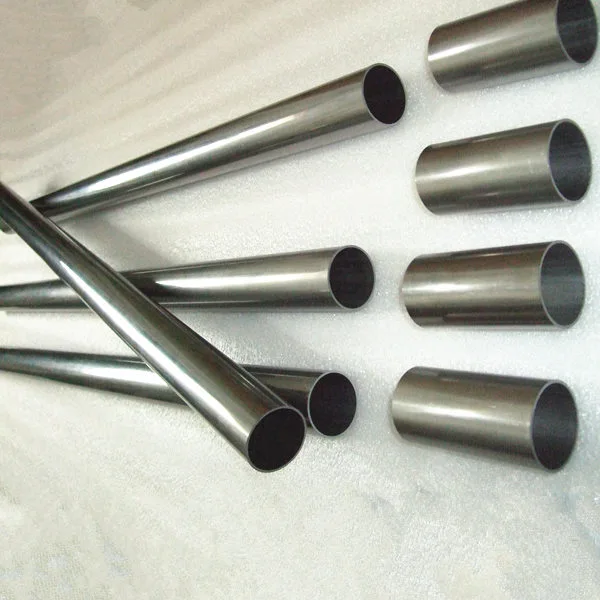Manufacturing Process and Quality Assurance

Extrusion and Cold-Drawing Techniques
The manufacturing process of seamless nickel alloy pipes involves sophisticated extrusion and cold-drawing techniques. These methods ensure the creation of pipes with uniform wall thickness and consistent material properties throughout. The extrusion process begins with a solid billet of nickel alloy, which is heated to a specific temperature and then forced through a die to create a hollow form. This initial shape is then further refined through cold-drawing, where the pipe is pulled through progressively smaller dies to achieve the desired dimensions and improve mechanical properties.
Quality Control Measures
Rigorous quality control measures are implemented throughout the production of seamless nickel alloy pipes. Non-destructive testing methods such as ultrasonic inspection, eddy current testing, and radiographic examination are employed to detect any internal or surface defects. These tests ensure that each pipe meets or exceeds industry standards for structural integrity and material homogeneity. The absence of welds simplifies the inspection process, as there are no joint areas that require special attention or pose potential weak points.
Material Composition and Alloy Selection
The selection of appropriate nickel alloys for seamless pipe production is crucial to meet specific application requirements. Manufacturers carefully control the chemical composition of the alloys to achieve desired properties such as corrosion resistance, high-temperature strength, and ductility. Common nickel alloys used in seamless pipe production include Inconel, Hastelloy, and Monel, each offering unique characteristics suitable for different industrial environments. The seamless manufacturing process allows for better control over the final material properties, ensuring consistency throughout the entire pipe length.
Performance Characteristics and Applications
Corrosion Resistance and Durability
Seamless nickel alloy pipes exhibit exceptional corrosion resistance, making them ideal for use in aggressive environments. The absence of welds eliminates potential weak points where corrosion could initiate, ensuring uniform protection against chemical attack. This superior corrosion resistance is particularly valuable in industries such as petrochemical processing, where pipes are exposed to harsh chemicals and high temperatures. The durability of seamless pipes translates to extended service life and reduced maintenance requirements, ultimately lowering the total cost of ownership for industrial facilities.
Pressure-Bearing Capacity and Structural Integrity
The uniform structure of seamless nickel alloy pipes results in superior pressure-bearing capacity compared to welded alternatives. The absence of weld seams eliminates potential stress concentration points, allowing for more consistent distribution of internal pressures. This characteristic is crucial in high-pressure applications, such as deep-sea oil and gas extraction, where pipe failure could have catastrophic consequences. The enhanced structural integrity of seamless pipes also contributes to improved safety margins in critical systems, providing peace of mind to engineers and operators.
Heat Transfer and Thermal Performance
Seamless nickel alloy pipes demonstrate excellent heat transfer properties, making them suitable for applications involving extreme temperatures. The uniform wall thickness and consistent material composition facilitate efficient heat conduction, which is particularly beneficial in heat exchangers and thermal management systems. Industries such as aerospace and power generation rely on the thermal stability of seamless nickel alloy pipes to maintain optimal performance in high-temperature environments. The ability to withstand thermal cycling without degradation further enhances the long-term reliability of these pipes in demanding applications.
Economic Considerations and Long-Term Benefits
Initial Investment vs. Lifecycle Costs
While seamless nickel alloy pipes may require a higher initial investment compared to welded alternatives, their long-term economic benefits often justify the upfront costs. The superior durability and reduced maintenance requirements of seamless pipes contribute to lower lifecycle costs. In critical applications where downtime is extremely costly, the reliability of seamless pipes can result in significant savings by minimizing the risk of unexpected failures and associated production losses. Additionally, the extended service life of seamless pipes reduces the frequency of replacements, further improving the overall cost-effectiveness of industrial systems.
Operational Efficiency and Performance Optimization
The use of seamless nickel alloy pipes can lead to improved operational efficiency in various industrial processes. The smooth interior surface of these pipes reduces friction and turbulence in fluid flow, resulting in lower pressure drops and improved energy efficiency in pumping systems. This characteristic is particularly valuable in applications such as chemical processing and oil refining, where optimized flow dynamics can significantly impact overall plant performance. The consistent material properties of seamless pipes also contribute to more predictable and stable process conditions, facilitating better control and optimization of industrial operations.
Regulatory Compliance and Safety Considerations
Seamless nickel alloy pipes often meet or exceed stringent regulatory requirements for safety and performance in critical industries. The absence of welds simplifies compliance with inspection and certification standards, as there are fewer potential failure points to assess. This can streamline approval processes and reduce the administrative burden associated with maintaining regulatory compliance. In safety-critical applications, such as nuclear power plants or aerospace systems, the use of seamless pipes provides an additional layer of assurance against catastrophic failures, helping organizations meet their obligations to protect personnel and the environment.
Conclusion
Seamless nickel alloy pipes provide significant advantages over welded alternatives, including superior structural integrity, enhanced corrosion resistance, and better performance in extreme conditions. Although the initial investment may be higher, the long-term benefits in reliability, efficiency, and safety make seamless pipes the preferred choice for critical industrial applications. As industries push material performance boundaries, seamless nickel alloy pipes will play an increasingly vital role in ensuring the safety and efficiency of complex systems across various sectors. For more information, contact us at rmd1994@yeah.net.